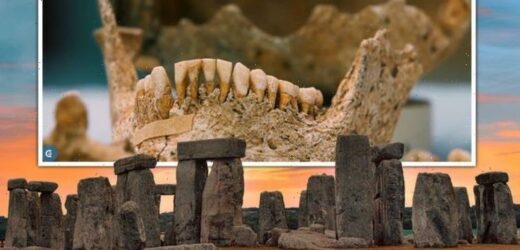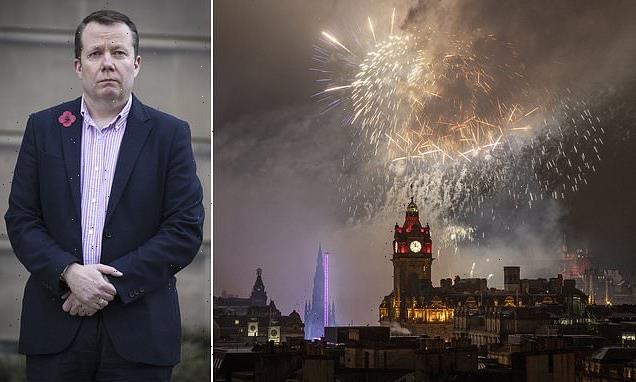Stonehenge: Osteoarchaeologist discusses find of human bones
We use your sign-up to provide content in ways you’ve consented to and to improve our understanding of you. This may include adverts from us and 3rd parties based on our understanding. You can unsubscribe at any time. More info
The story of Stonehenge is set to be told in a major British Museum exhibition. More than 250 objects from institutions across six European countries and across the UK will be loaned out to the nation’s flagship museum in order to set the stone monument in the context of an era that saw massive social and technological change. The Neolithic structure, built 4,500 years ago is the biggest of its kind anywhere in the world.
Little is known why exactly Britain’s ancient people built it, but many of its purposes have since been realised, including as a way to monitor the night sky during the year’s two solstices.
Some other highly-specific details are also known about Stonehenge, like where some of the rocks came from.
Last year, in a breakthrough study, researchers found the exact location of where its bluestone originated — a harsh piece of windswept land on Pembrokeshire’s Preseli Hills in South Wales.
Another niche yet vital aspect of the stones were revealed during Discovery UK’s documentary, ‘Blowing Up History’.


Here, osteoarchaeologist Jackie McKinley analysed the remains of two ancient humans found buried beneath the structure.
She believes that Stonehenge was not only used as a way to observe the sky, but also as a point of culture, commerce, and a vast burial ground.
On examining the remains, the two men – one young, around 20 years old, the other older but without his head, she made a groundbreaking discovery.
Human remains and their bones often hold vital keys about the biological signature of the person, the most specific being where they may have come from.
These signatures can sometimes be traced back to the groundwater consumed by someone in their early years, which can become fixed in the dental enamel of a growing child or bones.
JUST IN: Archaeology breakthrough: ‘Stunning’ triple find during HS2 work

Assessing the older man, his signatures suggested that he may have been from Central Europe, from the region of present-day Germany.
The younger man, too, was found to have spent some of his life in the same place, yet was born at Stonehenge.
Ms McKinley said: “The fact that we’ve been able to demonstrate that people might have moved several times in their lifetime between long distances is absolutely fascinating.
“What you’ve got is a connection between people over a large geographic area.
“And, whether they kept that connection because of trade, or because of family, or a combination of the two — that is just so modern in many ways, similar to what we would be doing now.”
DON’T MISS
Virus panic: First case of ‘flurona’– Covid and flu merge [REPORT]
Scientists suggest alien life forms could live in clouds of Venus [INSIGHT]
MH370 found? Satellite images expose possible ‘impact event’ [ANALYSIS]


Buried alongside the two men were two rare pieces of gold metalwork, which Mr McKinley claimed hinted at their profession as metal or jewellery workers.
She argued that the young man may have moved to Germany to take up something like an apprenticeship, learning his trade from the older man, later returning to Stonehenge to make and sell their wares — things that were at the time extremely modern.
This line of reasoning backed up her claim that Stonehenge was much more than a place where people came to observe the solstices.
Other research also suggests that Stonehenge was, in fact, something more similar to a large settlement.

Fieldwork carried out during Channel 5’s recent documentary, ‘The Stonehenge Enigma: What lies beneath?’ found a series of large pits placed in what appeared to be a strategic circle around the nearby Durrington Walls.
It was later found that the area was a bustling hub of Britons from around the country, who made regular trips to the site in order to participate in ritual, organised hunts.
They later called the ring of pits — that they claimed was intended to mark off Stonehenge as the last great Neolithic monument — the ‘Great Durrington Ring’.
Professor Mike Parker Pearson, an archaeologist at University College London (UCL) who has spent many years working at Stonehenge, suggested that the ring was a “real swan’s song moment for a way of life that was about to vanish forever”.

He continued: “You have to have a boundary, you have to have a point where you say, ‘Beyond this, something else happens’.
“That conditions are utterly different, and what better than to create that boundary in a great encirclement of Durrington Walls.
“What they were doing was marking it off to say that this was something great once, and this is now the area that it is that will remain special for eternity.”
“We’re coming up, now I think, with the most extraordinary view of seeing Stonehenge for the first time in its proper context.”
Source: Read Full Article


